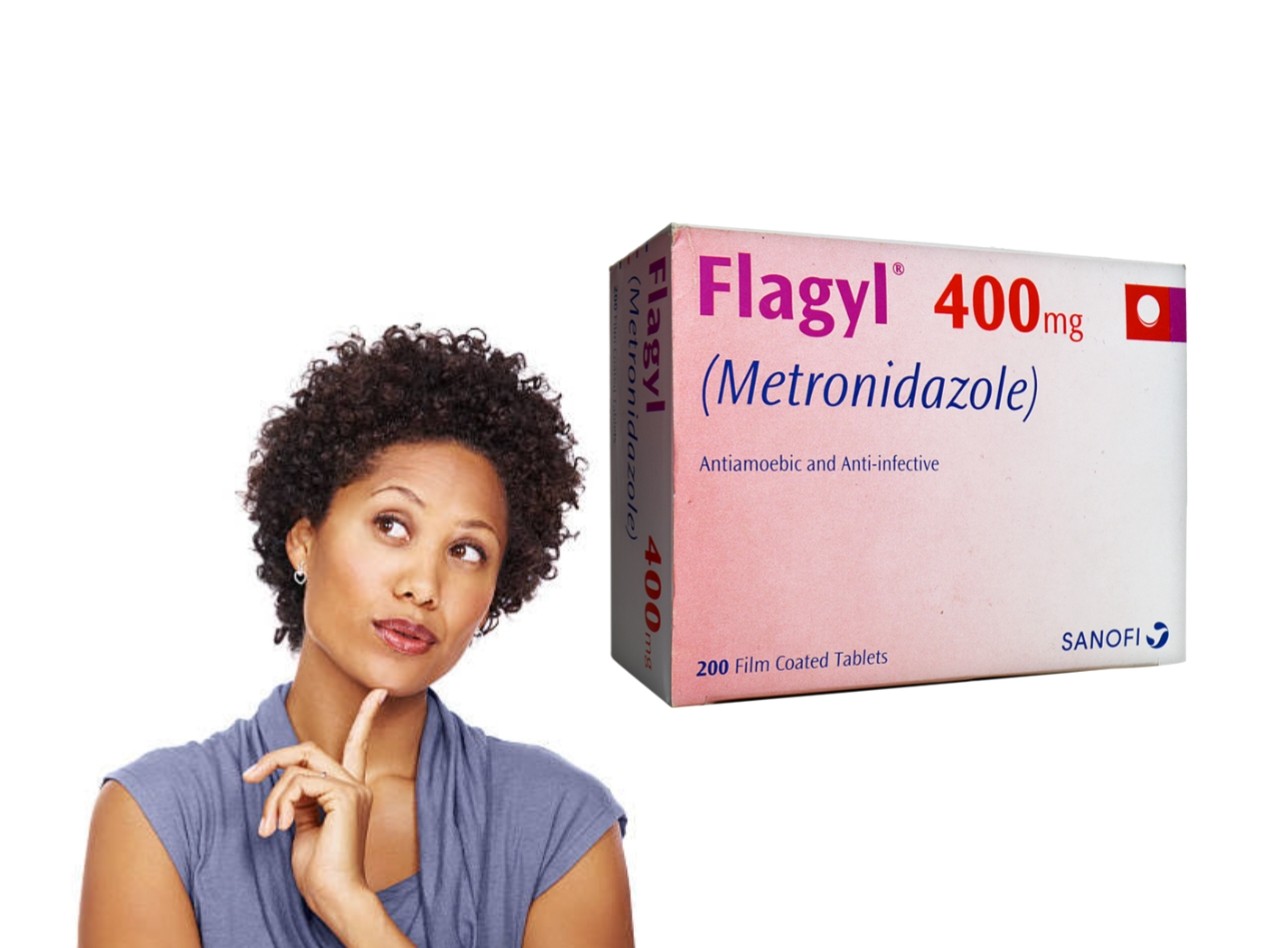Bacterial infection occurs when bacteria enter the body, increase in number, and cause a reaction in the body. Bacteria can enter the body through an opening in your skin, such as a cut or a surgical wound, or through your airway and cause infections like bacterial pneumonia.
Several types of bacteria can enter your body through contaminated food or water and cause diarrhea. Common bacteria that cause diarrhea include Campylobacter, Escherichia coli (E. coli), Salmonella, and Shigella.
Bacterial vaginosis (BV) and trichomoniasis are among the most common infection also caused by bacteria. It is the most common cause of abnormal vaginal discharge that occurs in reproductive-age women (women who have not gone through menopause yet). Bacterial vaginosis may cause a “fishy” odor and cause vaginal irritation in some women.
What is Flagyl?
Flagyl is a brand of metronidazole, an antibiotic that is used to treat a wide variety of infections. It works by stopping the growth of certain bacteria and parasites.
An antibiotic like Flagyl treats only certain bacterial and parasitic infections. It will not work for viral infections (such as common cold, or flu). Using any antibiotic when it is not needed can cause it to not work for future infections. Flagyl may also be used with other medications to treat certain stomach and intestinal ulcers caused by bacteria (H. pylori).
How should I use Flagyl?
Take Flagyl exactly as prescribed by your doctor. Follow all directions on your prescription label and read all medication guides or instruction sheets.
Flagyl oral is taken by mouth. The injection is given as an infusion into a vein. A healthcare provider will give you the injection if you are unable to take the medicine by mouth.
Shake the oral suspension (liquid). Measure a dose with the supplied measuring device (not a kitchen spoon).
Swallow the extended-release tablet whole and do not crush, chew, or break it.
If you are treating a vaginal infection, your sexual partner may also need to take Flagyl so you don’t become reinfected.
Flagyl is usually given for up to 10 days in a row. You may need to repeat this dosage several weeks later.
Keep using this medicine even if your symptoms quickly improve. Skipping doses could make your infection resistant to medication. This medicine will not treat viral infection (flu or a common cold).
Flagyl will not treat a vaginal yeast infection. You may even develop a new vaginal yeast infection, which may need to be treated with antifungal medication. Tell your doctor if you have symptoms such as itching or discharge during or after treatment with this medicine.
What are the signs that Flagyl is working for Bacterial vaginosis (BV)?
Bacterial vaginosis (BV) is a condition that happens when there are too much of certain bacteria in the vagina. This changes the normal balance of bacteria in the vagina. The two most common prescription medications used for the treatment of BV are metronidazole and clindamycin. Both medications need to be used for multiple days and can be taken in pill form by mouth, or with a gel or cream that is inserted inside the vagina.
The most important signs that Flagyl is working for BV include:
- The disappearance of the thin white or gray vaginal discharge
- Decrease in pain, itching, or burning in the vagina
- You no longer have the strong fish-like odor, especially after sex
- Less burning when peeing
- Reduction in itching around the outside of the vagina
Once you start treatment with a simple course of antibiotics, the symptoms of bacterial vaginosis (BV) usually go away within two to three days. While in some cases it can resolve on its own without treatment, it can take longer to clear up and it can come back. If left untreated, BV may increase your risk for Sexually transmitted diseases (STDs) like herpes, chlamydia, gonorrhea, and HIV where BV bacteria infect the uterus or fallopian tubes.
What are the signs that Flagyl is working for diarrhea?
Diarrhea is one of the most common health complaints. It can range from a mild, temporary condition to a potentially life-threatening one. Diarrhea is characterized by abnormally loose or watery stools. Most cases of diarrhea are due to bacteria, viruses, or parasites. Digestive system disorders can also cause chronic diarrhea. Examples of bacteria that cause diarrhea include Shigella, Escherichia coli, Campylobacter, and Salmonella. E. coli and salmonella are both bacteria that can cause food poisoning.
Flagyl is one of the available drugs used to reduce the main symptoms of gastroenteritis, which are diarrhea and vomiting. Signs that Flagyl is working for diarrhea include:
- Reduction in the frequency of bathroom use
- Less cramping
- Improved control of bowel movements
- Less nausea
- Less abdominal pain
- Controlled body temperatures
However, it is important to note that diarrhea is also a common side effect of Flagyl. While your antibiotic is busy battling the germs that are making you sick, the good-for-you bacteria in your gut become collateral damage. When that balance tips, the result can be loose, watery stools, the Mayo Clinic notes.
What are the signs that Flagyl is working for diverticulitis?
Diverticulosis occurs when small, bulging pouches (diverticula) develop in your digestive tract. When one or more of these pouches become inflamed or infected, the condition is called diverticulitis.
Patients with acute diverticulitis treated with Flagyl combined with a quinolone or with trimethoprim-sulfamethoxazole (Bactrim, Septra) or amoxicillin-clavulanate (Augmentin). Signs that Flagyl is working for diverticulitis include:
- Less pain on the lower left side of the abdomen is the usual site of the pain
- Less nausea and vomiting
- Controlled body temperatures
- Less tenderness
- Improved bowel movement or less commonly, diarrhea
What are the signs that Flagyl is working for trichomoniasis?
Trichomoniasis is a common sexually transmitted infection caused by a parasite. In women, trichomoniasis can cause a foul-smelling vaginal discharge, genital itching, and painful urination. Men who have trichomoniasis typically have no symptoms. Signs that Flagyl is working for trichomoniasis, especially among women can include:
- Less itching,
- Less burning, redness, or soreness of the genitals
- Improvement in peeing discomfort
- Normal vaginal discharge with no fishy smell
What are the likely side effects of using Flagyl?
Common Side effects of Flagyl include:
- Appetite loss
- Aseptic meningitis
- Blood clot (thrombophlebitis)
- Brain disease (encephalopathy)
- Dark urine
- Decreased libido
- Diarrhea
- Disulfiram-type reaction with ethanol
- Dizziness
- Dry mouth
- Furry tongue
- Headache
- Hypersensitivity
- Loss of control of bodily movements
- Low white blood cell count (neutropenia)
- Metallic taste
- Nausea
- Neuropathy
- Optic neuropathy
- Pancreatitis
- Seizures
- Stevens-Johnson syndrome
- Toxic epidermal necrolysis
- Vomiting
- Yeast infection (candidiasis)
Side effects of Flagyl from postmarketing reports include:
- Crohn’s disease
- Difficult or painful sexual intercourse
- Fleeting joint pains that may resemble serum sickness
- Hiccups
- Psychosis
- Rectal pain and inflammation
This document does not contain all possible Flagyl side effects and others may occur. Check with your physician for additional information about side effects.






